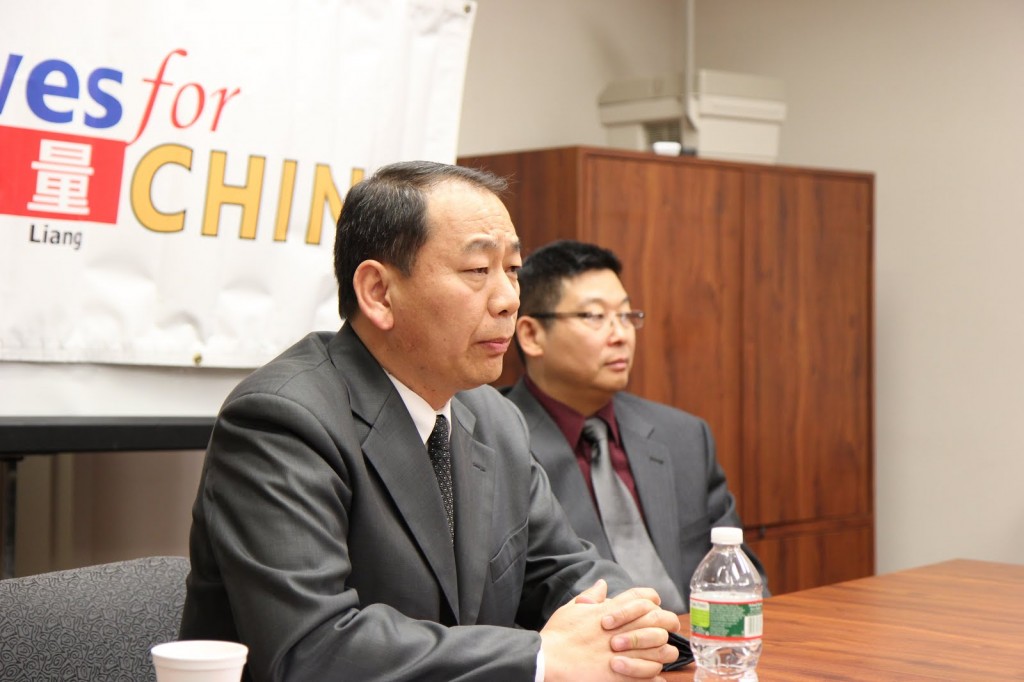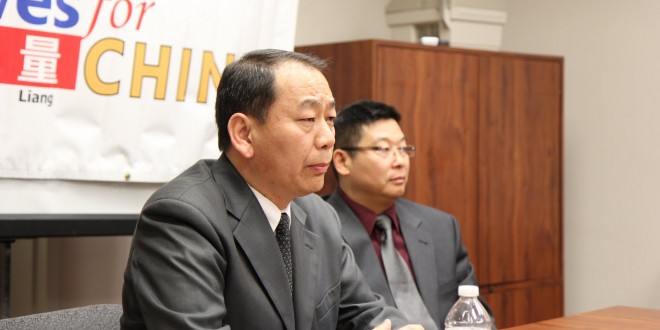By Michelle Phipps-Evans

More than 110 Tibetans have set themselves on fire since February 2009. The Tibetans have publicly self-immolated in protest against Chinese oppression; many accusing the authorities of repressing their religion and eroding their culture. They have chosen this route because not enough attention is being paid to the Tibetans, said Lobsang Nyandak, the North American representative to His Holiness the Dalai Lama since 2008.
“Tibetans are so desperate in their attempts to address the Chinese authorities,” said Nyandak who recently traveled from New York to the District of Columbia to discuss Tibet in a meeting hosted by the Citizens Power for China (Initiatives for China), a District-based grassroots pro-democracy group.
“It’s difficult to relate to the suffering…. [But] they’re trying to communicate to a higher authority,” he said. “Strictly speaking, for Tibetan Buddhists, suicide is a sin; but self-mutilation is good as it brings more attention to the plight of the people, and it’ll bring happiness to the people.”
Other methods have failed.
“For the last 50 years, Tibetans have tried to use other means against the Chinese authorities—peaceful protest and letters, so the only other means left is to burn themselves,” Nyandak said. As recent as the end of March, a 33-year-old mother of four burned herself to death in protest.
Nyandak said that within the country of Tibet, the people have given support to, and have great respect for the self-immolators. Yet, government censorship in China has made information sharing more difficult.
“Self-mutilation is going on but the Chinese people don’t know,” Nyandak explained. “But the greatest asset we do have is the support of the Chinese community.” According to Citizens Power for China, Tibet remains tense while the Chinese government continues to put the blame on the Tibetans, showing no willingness to address the root cause of the crisis now unfolding in Tibet.
The 14th Dalai Lama, the Tibetan spiritual leader, believes that the people-to-people contact between the Chinese and the Tibetan people is one of the most important steps in raising awareness of the Tibetan issue among the Chinese public, said his representative. The Dalai Lama doesn’t encourage self-immolation and questions its usefulness as a protest tool.
Most of the protesters have been monks, nuns and teenagers. Not all have died but many have sacrificed their lives, according to the International Campaign for Tibet, which calls attention to the plight of Tibetans.
So far, the self-immolations have failed to prompt the changes the protesters demand: an end to government interference in their religion, and a return of the exiled Dalai Lama, who escaped Tibet since 1959.
The reason lies in China’s massive policy failure in Tibet over the course of more than 60 years of its rule, writes Sikyong Dr. Lobsang Sangay in the white paper, “Why Tibet is Burning?” at the Kashag Secretariat on Jan. 28, 2013. This is the highest office in the Central Tibetan Administration, the official name of the exiled government, which has called for a stop to the self-immolations.
“The revolution that is brewing in Tibet is driven by political repression, cultural assimilation, social discrimination, economic marginalization and environmental destruction,” said Sangay.
Nyandak took questions from the sizeable audience at the Citizens for Power meeting, where several people sat at a table to hear his thoughts. He didn’t want to speculate on when he thought the self-immolations will end, adding that it’s “up to the Chinese leadership to put an end to it.”
He also put an end to speculation about the Dalai Lama’s return to Tibet to stop the self-immolations.
“No, he’s not going to return,” said Nyandak adding that the spiritual leader believes there needs to be a win-win strategy for all. “It would be an endorsement of the Chinese government policies against the Tibetan people. If there’s improvement in the country, there may be some change.”
Asian Fortune is an English language newspaper for Asian American professionals in the Washington, DC metropolitan area. Visit fb.com/asianfortune to stay up to date with our news and what’s going on in the Asian American community.
 Asian Fortune Your source for all things Asian American
Asian Fortune Your source for all things Asian American

3 comments
Pingback: More Attention to Tibet Needed – Asian Fortune | Latest News Depot
Pingback: – The Silence Around Tibet’s Ecological Crisis – The Atlantic | Boeddha
Pingback: Dalai Lama packs UM Comcast Center for address on compassion – Baltimore Sun « Contacto Latino News